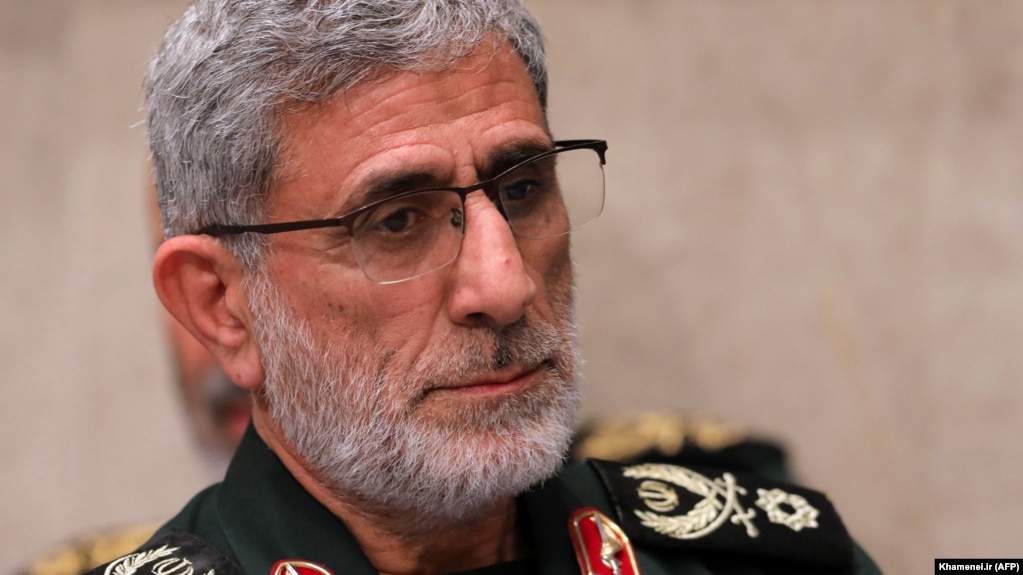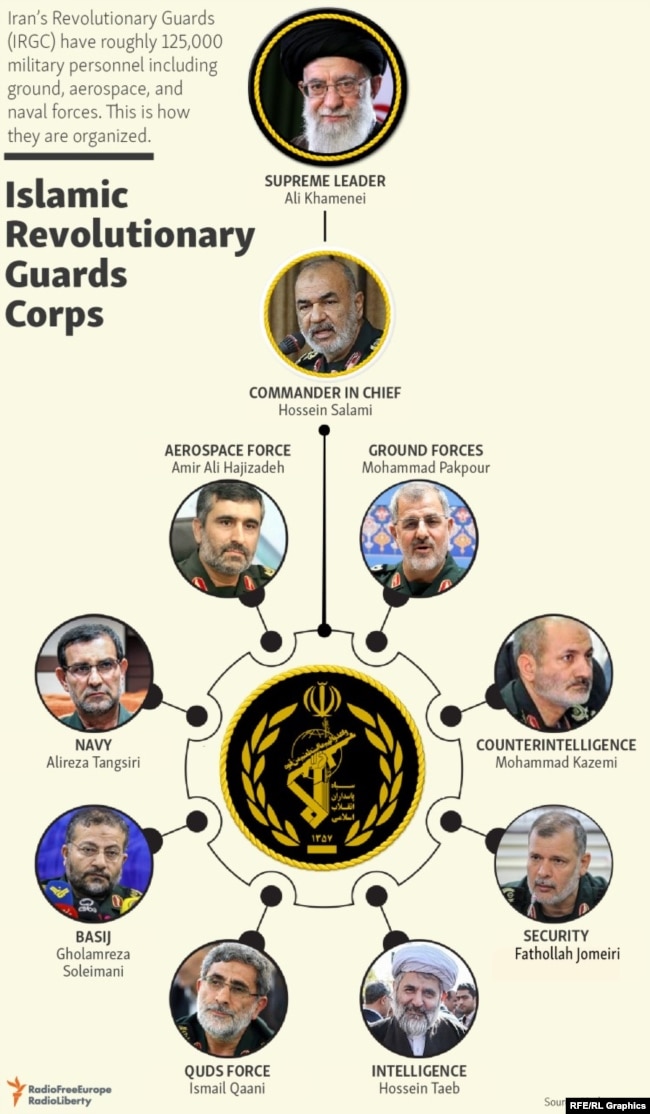By Frud Bezhan
 It was in the late 1980s when Ismail Qaani -- then a local commander in Iran’s powerful Islamic Revolutionary Guards Corps (IRGC) -- first became active in Afghanistan.
It was in the late 1980s when Ismail Qaani -- then a local commander in Iran’s powerful Islamic Revolutionary Guards Corps (IRGC) -- first became active in Afghanistan.
It was to be the start of Qaani's decades-long involvement in Iran’s eastern neighbor, where Tehran has carved up influence by arming and offering political and economic backing mostly to the Shi'ite and Persian-speaking communities.
Qaani on January 3 became the chief of Iran’s elite Quds Force, the overseas operations arm of the IRGC, established following the 1979 Islamic Revolution to defend the country's theocratic system.
The 63-year-old general succeeded Major General Qasem Soleimani, who was killed in a U.S. drone strike in the Iraqi capital, Baghdad, early on January 3. He had long served as Soleimani's deputy.
Mysterious Visit
Soon after Qaani's appointment, photos of the media-shy general appeared in the Afghan media from a mysterious trip he took to Afghanistan in 2018.
Qaani was in several photos alongside Mohammad Tahir Zuhair, the governor of Bamiyan Province, a predominately Hazara area in central Afghanistan.
Zuhair told RFE/RL’s Radio Free Afghanistan on January 9 that Qaani introduced himself as Iran’s deputy ambassador to the country and said his name was “Ismaili.” He says he didn't know that Qaani was the deputy chief of the Quds Force.
"We were informed by Kabul that an Iranian delegation was coming to Bamiyan to visit a hospital that was being built with Iranian funds,” said Zubair. “They went straight from the airport to the hospital. They were at the hospital for around 45 minutes. Then they came to my office. I held talks with them for around 10 minutes. They assured us that the construction of the hospital would be completed.”
 Qaani speaks in May 2017
Qaani speaks in May 2017
Afghanistan’s acting foreign minister, Idrees Zaman, said on January 7 that Kabul was investigating the "exact nature" of Qaani's visit.
"At this point, I can assure you that he was never the deputy ambassador in Afghanistan,” said Zaman.
Qaani also visited Kabul in the same year.
He was among an Iranian delegation that held talks with Afghan President Ashraf Ghani and Chief Executive Officer Abdullah Abdullah, local media reported.
History Of Violence
Qaani's recent trips to Afghanistan are just the latest examples of his activities in the war-torn country.
Born in the northeastern Iranian city of Mashhad -- less than 200 kilometers from Afghanistan -- Qaani joined the IRGC in 1980.
After the 1980-88 Iran-Iraq War, Soleimani spearheaded Tehran’s operations in the west, spreading Tehran’s influence in the Middle East. Qaani, meanwhile, led Iranian activities in the east: Afghanistan, Pakistan, and Central Asia. He was also stationed in Iran's Khorasan Province, which shares a border with Afghanistan and Turkmenistan.

In the 1990s, Afghanistan was consumed by a vicious civil war among the warring mujahedin factions that had toppled the communist regime in Kabul just three years after the end of the Soviet Union’s decade-long occupation. The civil war ended when the Taliban seized power of the capital in 1996.
“In the 1990s, as a local IRGC commander, Qaani got involved in Iran’s war against Afghan drug cartels and later in the war in Afghanistan,” said Ali Alfoneh, a senior fellow at The Arab Gulf States Institute in Washington.
Tehran provided support to the Northern Alliance, a loose coalition of mujahedin militias that maintained control of a small section of northern Afghanistan as it battled the Taliban. The military front was led by Ahmad Shah Masud, the famed anti-Soviet commander.
Afghanistan’s Tolo News published a photo of what it said was Qaani and Masud in Tajikistan in 1999.
Alfoneh, an IRGC expert, said Qaani was involved in providing logistical, financial, and military support to the Northern Alliance. Tehran was one of the main backers of the alliance alongside India, Russia, and the United States.
He added that Qaani frequently visited Tajikistan -- Afghanistan’s northern neighbor -- where the Northern Alliance sent its fighters for treatment and received weapon shipments from allies abroad.
“Qaani appears to have traveled into Afghanistan to establish a presence,” said Alfoneh. “That is particularly true after the Taliban seizure of Kabul.”
Major General Qasem Soleimani
It was around this time that Soleimani made Qaani his deputy.
 Shi’ite-majority Iran backed the alliance because it was concerned about the growing strength of the Taliban, a fundamentalist Sunni group that was backed by Tehran’s regional rivals -- Saudi Arabia, the United Arab Emirates, and Pakistan.
Shi’ite-majority Iran backed the alliance because it was concerned about the growing strength of the Taliban, a fundamentalist Sunni group that was backed by Tehran’s regional rivals -- Saudi Arabia, the United Arab Emirates, and Pakistan.
Iran and the Taliban were on the verge of war in 1998 after eight Iranian diplomats and an employee of Iran's state-run IRNA news agency were killed at the Iranian Consulate when Mazar-e Sharif was overrun by Taliban fighters. The Taliban denied any involvement in their deaths. Outraged by the deaths, Tehran deployed tens of thousands of troops along the border with Afghanistan -- but stopped short of invading the country.
The Northern Alliance toppled the Taliban regime after the U.S. invasion in 2001.
Afghan Proxy
When the Syrian civil war erupted in 2011, the IRGC sent military advisers and deployed thousands of trained Shi’ite fighters to prop up the regime of President Bashar al-Assad. Among them was the Fatemiyoun Brigade, comprising mainly Afghans from the Shi'ite Hazara minority.
The Fatemiyoun Brigade included veterans of the Abuzar Brigade, an Afghan militia made up of Shi’a that fought on Iran’s side in the war against Iraq.
No comments:
Post a Comment